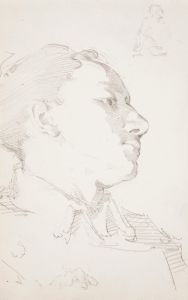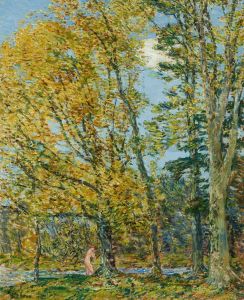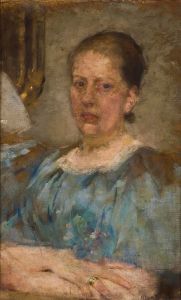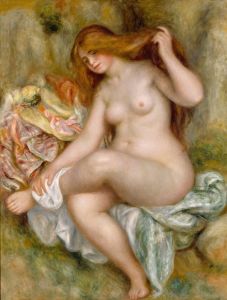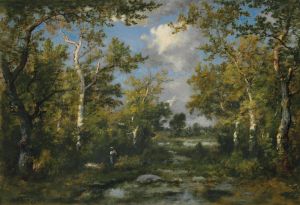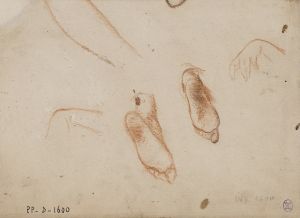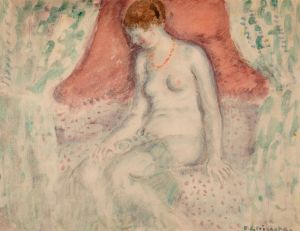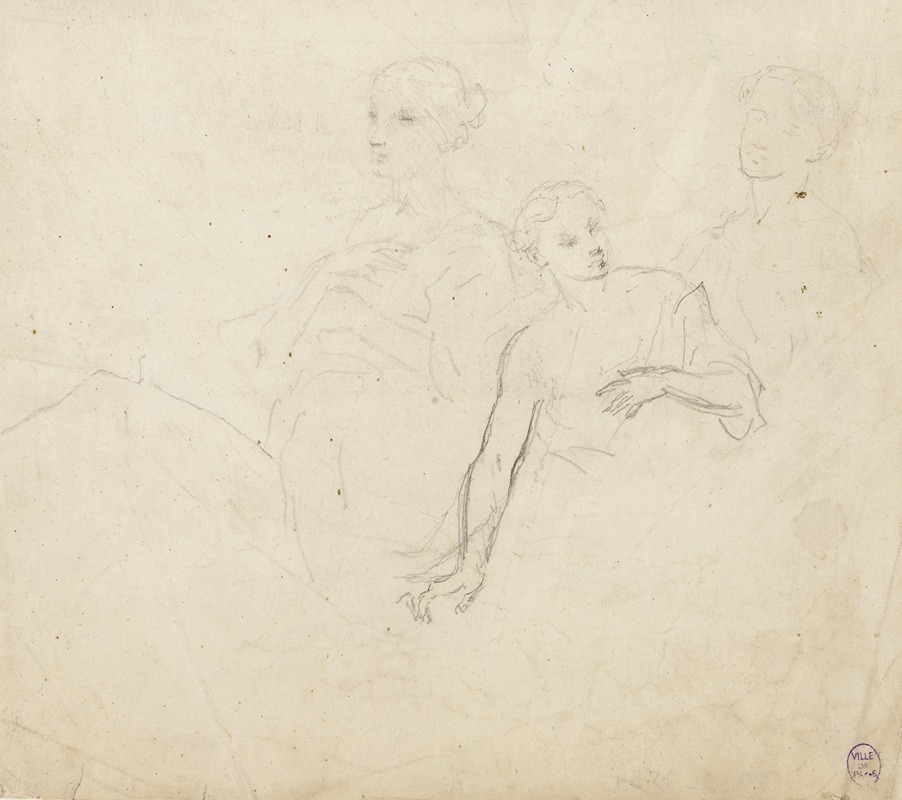
Trois figures de femme à mi-corps
A hand-painted replica of Narcisse-Virgile Diaz de La Peña’s masterpiece Trois figures de femme à mi-corps, meticulously crafted by professional artists to capture the true essence of the original. Each piece is created with museum-quality canvas and rare mineral pigments, carefully painted by experienced artists with delicate brushstrokes and rich, layered colors to perfectly recreate the texture of the original artwork. Unlike machine-printed reproductions, this hand-painted version brings the painting to life, infused with the artist’s emotions and skill in every stroke. Whether for personal collection or home decoration, it instantly elevates the artistic atmosphere of any space.
"Trois figures de femme à mi-corps" (Three Half-Length Figures of Women) is a painting by the French artist Narcisse-Virgile Diaz de La Peña, who was a prominent figure in the Barbizon School of painters. Born on August 20, 1807, in Bordeaux, France, Diaz de La Peña was known for his romantic and often exotic subjects, as well as his vibrant use of color.
The painting "Trois figures de femme à mi-corps" depicts three women in half-length poses. The composition is notable for its intimate portrayal of the subjects, capturing their expressions and attire with a keen eye for detail. The women are dressed in richly colored garments, which are rendered with Diaz de La Peña's characteristic lush and textured brushwork. The background of the painting is relatively subdued, allowing the figures to stand out prominently.
Diaz de La Peña's work often reflected his interest in the natural world and human figures, and this painting is no exception. The artist was influenced by the Romantic movement, which is evident in the emotional depth and dramatic presentation of the subjects. His ability to convey the subtleties of light and shadow adds a sense of realism and depth to the painting.
The Barbizon School, to which Diaz de La Peña belonged, was a group of mid-19th-century French painters who settled in the village of Barbizon near the Forest of Fontainebleau. They were part of a larger movement that sought to break away from the formalism of academic art and instead focused on painting landscapes and scenes of rural life directly from nature. Diaz de La Peña, although more inclined towards figure painting, shared the Barbizon School's commitment to naturalism and often incorporated elements of the landscape into his works.
"Trois figures de femme à mi-corps" is an excellent example of Diaz de La Peña's skill in capturing the human form and his ability to infuse his subjects with a sense of life and presence. The painting is also a testament to his mastery of color and texture, which he used to create a rich and dynamic visual experience.
Throughout his career, Diaz de La Peña received recognition for his contributions to art. He exhibited regularly at the Paris Salon, where his works were well-received by critics and the public alike. His paintings are held in high regard and can be found in major museums and private collections around the world.
In summary, "Trois figures de femme à mi-corps" by Narcisse-Virgile Diaz de La Peña is a significant work that showcases the artist's talent for portraiture and his distinctive style. It reflects the broader artistic trends of the 19th century and the specific influences of the Barbizon School, making it an important piece in the history of French art.





